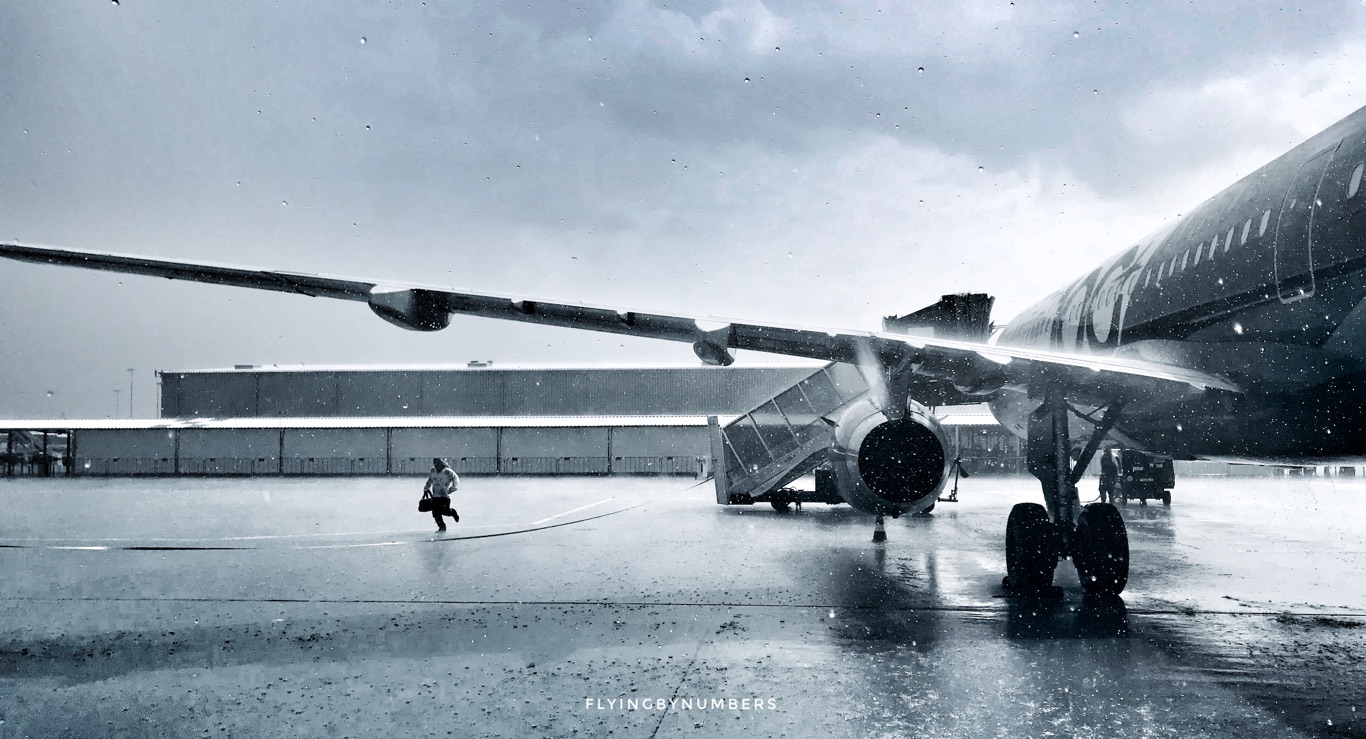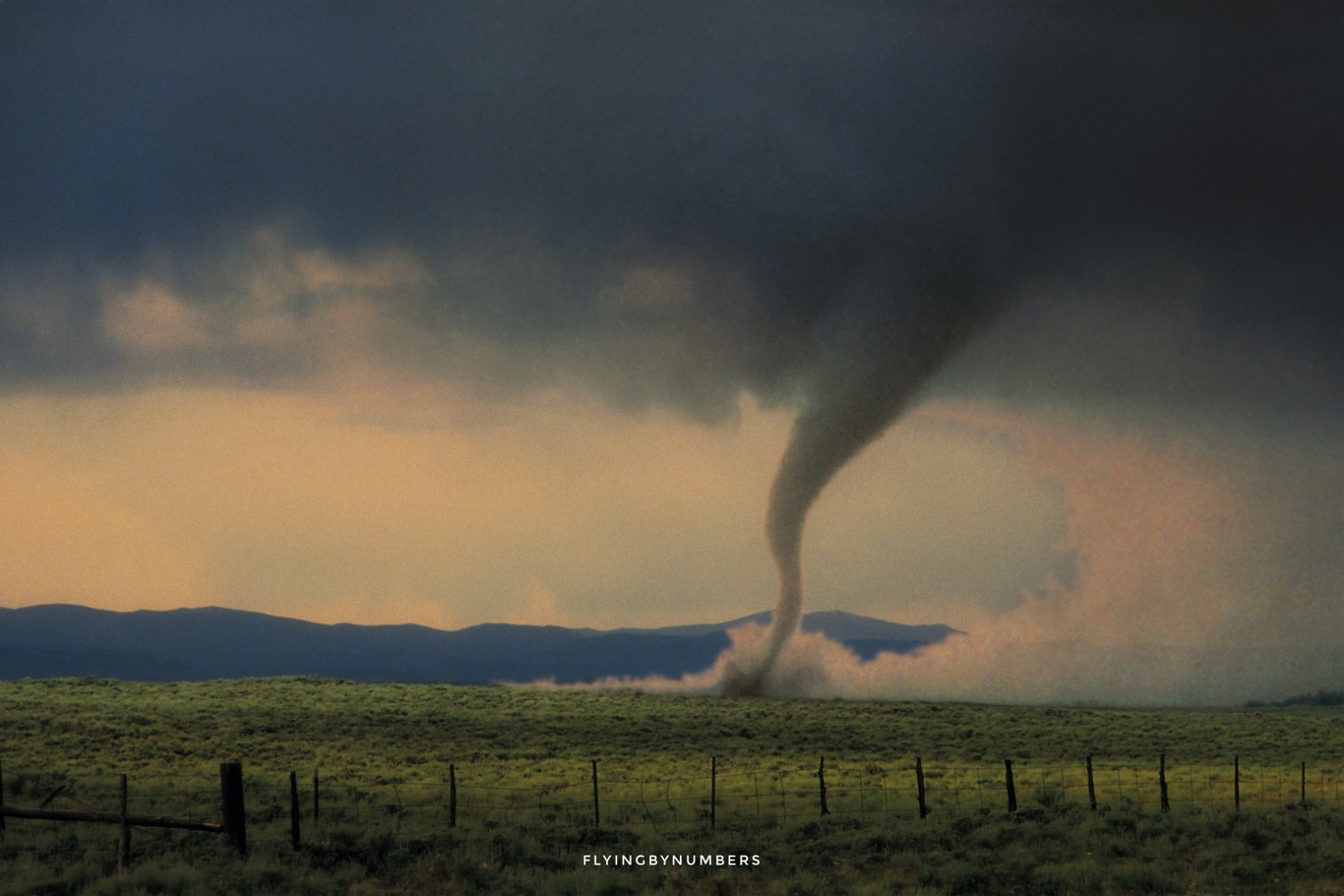Bad weather makes headlines, and causes chaos to even the best laid travel plans. In the eye of the storm, aviation typically fares the worst, with strong winds generating considerable delays and scattering aircraft and their despondent passengers across the globe.
But, where is the limit? At what point is it simply too windy to fly? In this article, we’ll take an expert look at the factors affecting flights in bad weather, and put some numbers to these limits.
We’ll explore how flying in storms poses significant challenges. Understanding some behind-the-scenes wind limits in commercial aviation can be crucial for passengers wondering about the potential for flight cancellations or diversions.
So, without further ado, here’s what you need to know to gauge the likelihood of how stormy winds might impact your travel.
Commercial Flight: Wind Limits
In ascending windspeed order, let’s have a look at what happens when windspeed increases, and why it leads to knock on delays…
Remember: As we saw in our article, how fast do planes fly, aviation wind speeds are reported in knots, with 1 Kt = 1.15 mp/h or 1.85 km/h.

25-35kts
With wind speeds above 25kts close to the ground, air traffic control and pilots’ jobs get a little harder…
ATC flow rates
- At many international airports, aircraft are tightly sequenced — lined up at the minimum distance apart — so that tightly constrained airports can maximise their traffic.
- Strong winds close to the ground provide extra difficulty for air traffic controllers to keep the aircraft spaced as closely together as possible.
- A small increase in spacing subtly reduces the hourly rate of landings and departures.
- At the busiest airports, small effects ripple, and this reduction in traffic — known as the flow rate — can cause massive delays to build up for arriving and departing aircraft
- In persistent winds, queues can build up into the next day, leading to flight cancellations.
Pilot “Go-Arounds”
During storm conditions, landing a commercial aircraft requires careful consideration of wind speeds and direction. Unlike the autopilot, which is typically unable to be used in windy landings, all professional pilots are trained and capable of landing planes in conditions up to the maximum aircraft limits. However, the additional challenges during bad weather often create delays:
- Turbulence caused from nearby buildings, awkwardly timed gusts, or simply just pilot error, means that aircraft can become unstable during the landing manoeuvre
- Rather than attempt to “rescue” the landing, pilots are always trained to abort an approach that becomes unstable near to the ground and attempt another go
- Winds in this range mean that these aborted landings — known as a go-around — are flown slightly more often than usual.
- Each go-around “wastes” a landing slot, and causes additional delays as the aircraft needs to be positioned by ATC back in the queue, for another attempt at a landing
- At the busiest airports, this minor increase in additional go-arounds can lead to significant delays building up as it reduces the overall landing rate.

35-45 kts
As windspeed notches up further, additional problems begin to mount. Namely, to do with aircraft limitations, but also to do with airport facilities.
Aircraft limitations: What is a crosswind limit?
When determining the thresholds for safe flight, commercial aircraft manufacturers specify maximum wind limits based on rigorous flight testing. Crosswind — when the wind is perpendicular to the runway — is one of the most limiting conditions for takeoff and landing, with manufacturers and airlines adhering to strict limits.
Generally, commercial jet crosswind limits typically range anywhere from 35 to 40 knots. These limits are established with a margin of safety and vary by aircraft type and the procedures adopted by the airline.
For instance, the Boeing 737, has a demonstrated crosswind component limit of 33–35 knots for differing variants. Whereas the larger Boeing 777/787s have limits of 38 knots.
What happens if the winds increase beyond these crosswind limits?
Wind limitations — including gusts — are mandatory regulatory limits. Pilots are simply prohibited from making a takeoff or a landing if the wind is exceeding them at the moment of takeoff or landing.
The knock on effects? Winds in this range lead to aircraft carrying additional fuel, giving them the time to fly holding patterns and wait for a lull in the wind. If the wind doesn’t drop off in the time they have available, pilots will end up diverting to somewhere with lesser crosswinds.
Airport Facilities: Runways & Spare Capacity
Airport infrastructure also plays a pivotal role in how wind affects aviation operations:
- Runway orientation is designed to accommodate the prevailing winds in the region, reducing crosswinds and allowing for safer takeoffs and landings.
- Many airports have multiple runways orientated in differing directions to minimise crosswinds in changing winds.
- While aircraft have strict tailwind and crosswind limitations, there are typically no limitations based on headwinds for landing
- As long as the airfield is using a runway into wind, very high winds are perfectly safe for pilots to land aircraft in.
However, not all airports have the luxury of multiple runways oriented in different directions — or even to be built with the runways in the correct direction for prevailing winds. Equally, some airports have sufficient infrastructure to accommodate peaks and troughs of traffic with plenty of redundancy, while others are busy 24/7.
This means that when storms roll in and wind-speeds pick up, there are considerable variations between how well airports cope. As a general rule, slot constrained airports — those with more demand than they have spaces — such as New York’s JFK or London’s Heathrow suffer hugely with knock-on effects of high winds due to their lack of flexibility to catch up. In contrast, airfields like Iceland’s Keflavik Airport, with good facilities and runways in multiple directions for high-winds, suffer from persistently worse weather, but are far better equipped to cope.
Furthermore, some airports may impose their own operational limits that are significantly more conservative than those of the aircraft to ensure the safety of passengers and crew.
Examples of this include airports such as Gibraltar (LXGB), with unique wind effects due to its unusual terrain.
When winds exceed these predefined limits, air traffic controllers can delay takeoffs and landings, or divert aircraft to alternative airports on what may seem a relatively benign day.


45-65kts
At wind speeds beyond 45kts, additional factors that might not be immediately apparent begin to have an outsized impact. This is why, even at airports with runways into wind, wind speeds in this range significantly affect flights and cause giant delays.
Ground equipment limits
The reason is that high wind conditions also impact ground operations, making the handling of baggage and ground support equipment more hazardous, and potentially impacting the turnaround time of an aircraft.

Ground equipment maximum wind limits
40 kts — Over 40 kts wind means most commercial aircraft cargo doors cannot be opened safely, so passengers will not be able to receive their luggage
50 kts — Over 50kts wind speeds mean that aircraft are typically unable to be towed by tugs, so the normal movement of aircraft on the ground is impacted.
60 kts — Over 60-65kts commercial aircraft doors, holds and passenger doors, are unable to be opened or closed. As a result, they must be kept shut, with passengers waiting until the wind speed drops before disembarking.
Will my flight be cancelled or diverted in strong winds?
A multitude of factors ranging from aircraft type, airport infrastructure, and the specifics of the weather conditions all influence the likelihood of delays and cancellations. This makes it almost impossible to know which flights will be affected ahead of time.
However, if you’re trying to anticipate whether your flight will be affected by stormy weather, pay attention to the following:
- When weather is forecast to be above 30kts at your arrival or departing airfield, expect to travel but with the potential for some delays.
- Cancellations and diversions typically occur when winds surpass 40-50kts, or when other storm-related factors —like lightning or severe turbulence —are present.
- Register for updates from your airline by adding a phone number whilst booking, as airlines will often “tactically cancel” flights the day before, if they are expecting knock-on-effects from bad weather.
Summary
Airlines and pilots prioritise safety above all, and if there is any doubt about the weather conditions, they will opt for the safest route. This ranges from aborting unstable landing attempts, to cancelling flights entirely — even if it means disrupting travel plans.
In strong winds, behind the scenes, there is a comprehensive range of factors from airport facilities, air traffic control rates, and even ground equipment limitations that must be adhered to. And, because of these limits, airport delays during storms and periods of exceptionally high winds are unavoidable.
While passengers can’t calculate the exact likelihood of their flights being cancelled or delayed due to bad weather, being informed about these factors can help in understanding the airline’s decisions. For passengers that are attempting to travel during bad weather, it’s always advisable to be prepared for a long wait. Airlines will ensure you get to your destination safely — but it may take some time!





